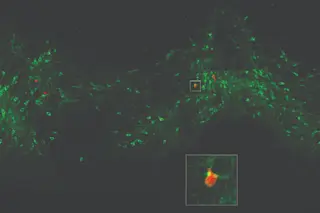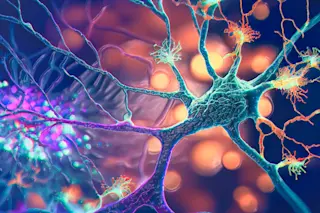The best way doctors have to find out how much pain a patient's in is to ask---but that approach can fall short when someone's unable to speak, exaggerating or downplaying their condition, or just plain unsure how to rate their pain on a 10-point scale. Because of these problems with self-reporting, scientists have long been looking for an objective, physiological measure to quantify pain. A recent brain scanning study, in which the researchers could pick out painful experiences based on neural activity, brings that goal closer. How the Heck:
What's the News:
The researchers gave each of 24 participants an fMRI scan, which measures blood flow in the brain. They tracked the participants' brain activity as a small portion of their forearm was exposed to heat, which was either painful (quite hot) or not painful (pleasantly warm). A computer algorithm then analyzed the data for patterns, looking for types of ...













